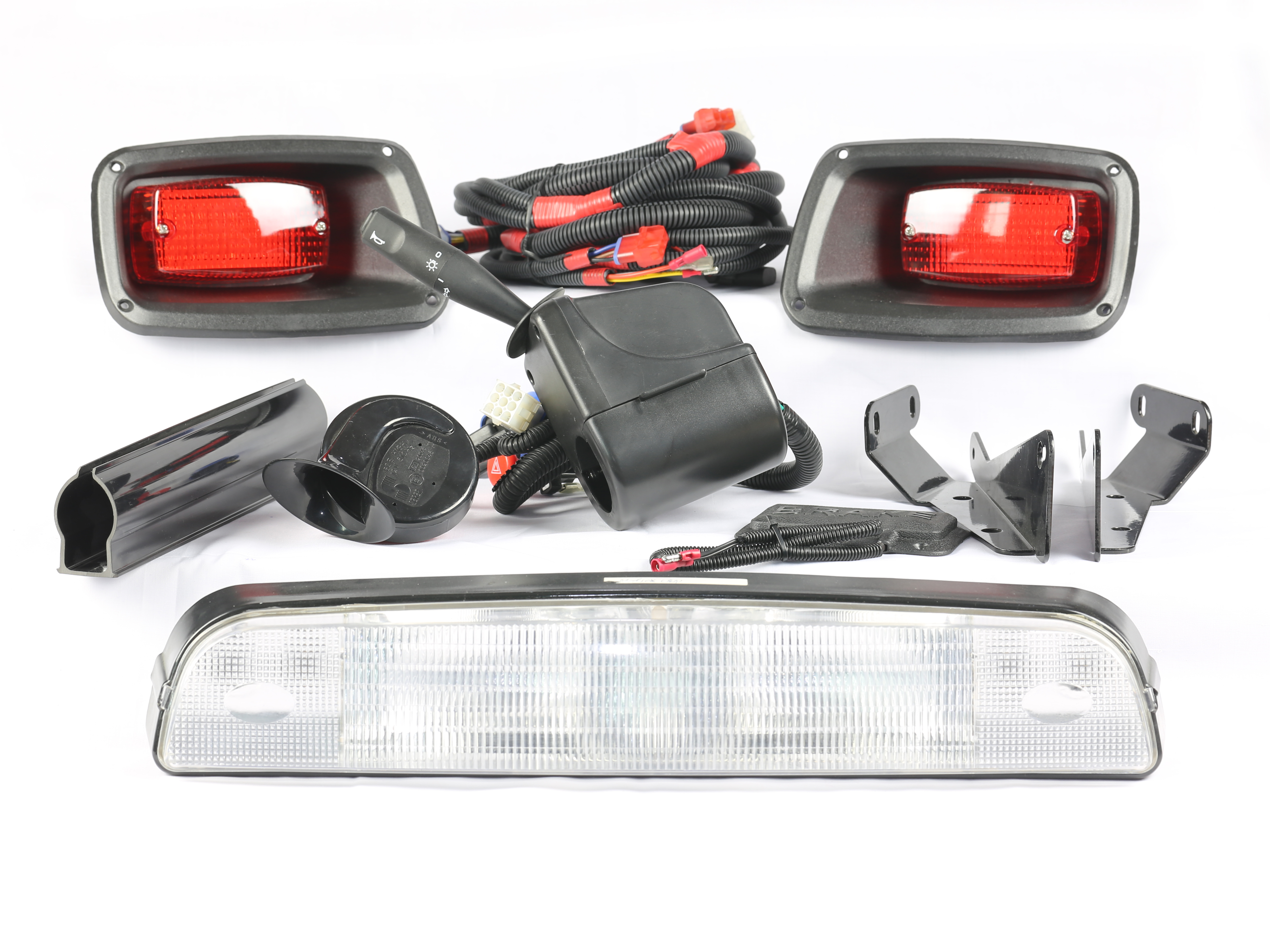Understanding Golf Cart Light Installation and Enhancement
Golf cart lights have become an essential component for both functional and aesthetic purposes, transforming basic utility vehicles into versatile machines for various applications. Whether you're using your cart for evening golf rounds, neighborhood transportation, or recreational purposes, proper lighting ensures safety and visibility while adding a touch of personalization to your vehicle.
The process of installing and upgrading golf cart lights has evolved significantly over the years, with modern solutions offering plug-and-play functionality and advanced features that were once reserved for traditional automobiles. As cart owners increasingly customize their vehicles, understanding the intricacies of light installation becomes crucial for making informed decisions about upgrades and modifications.
Types of Golf Cart Lighting Systems
Basic Light Kits and Components
Standard golf cart lights typically include headlights, taillights, and brake lights. These fundamental components ensure safe operation during low-light conditions and comply with basic safety requirements. Basic kits usually come with mounting brackets, wiring harnesses, and essential hardware for installation. Many manufacturers design these kits specifically for popular cart models, making installation straightforward for most owners.
The quality of basic light kits can vary significantly, from budget-friendly options to premium packages with enhanced durability and brightness. While entry-level kits may suffice for occasional use, investing in higher-quality components often pays off in terms of longevity and performance.
Advanced Lighting Options
Modern golf cart lights have expanded beyond basic functionality to include LED strip lighting, underglow effects, and programmable RGB systems. These advanced options not only improve visibility but also add a custom aesthetic appeal to the vehicle. LED technology, in particular, has revolutionized cart lighting with its energy efficiency, brightness, and durability.
Premium lighting packages may include features like Bluetooth connectivity, allowing users to control colors and patterns through smartphone applications. Some systems even offer music synchronization capabilities, creating dynamic lighting effects that respond to audio input.

Installation Process and Considerations
Tools and Preparation
Before beginning any golf cart lights installation, gathering the proper tools and materials is essential. Common tools include wire strippers, crimpers, screwdrivers, and a voltage meter. Having a clean, well-lit workspace and reviewing the manufacturer's instructions thoroughly can prevent common installation mistakes.
Safety should be the primary concern during installation. Disconnecting the battery and working in a covered area protects both the installer and the equipment. Creating a detailed installation plan and organizing components before starting helps ensure a smooth process.
Wiring and Mounting Techniques
Proper wiring is crucial for the reliable operation of golf cart lights. Modern kits often feature color-coded wires and plug-and-play connectors, simplifying the installation process. However, understanding basic electrical principles remains important for troubleshooting and custom modifications.
Mounting locations should be carefully selected to maximize visibility while protecting the lights from potential damage. Weather-resistant installation techniques, including proper sealing and routing of wires, help prevent moisture-related issues and extend the system's lifespan.
Upgrading Existing Lighting Systems
Evaluating Current Setup
Before upgrading golf cart lights, assessing the existing system helps determine compatibility and potential limitations. Factors like voltage requirements, current draw, and available mounting space influence upgrade options. Documentation of the current wiring configuration can facilitate future modifications or repairs.
Many owners choose to upgrade incrementally, starting with essential components before adding decorative elements. This approach allows for budget management while gaining experience with installation techniques.
Modern Upgrade Options
Contemporary upgrade options include high-intensity LED replacements, dynamic turn signals, and sophisticated control modules. These improvements can significantly enhance both functionality and appearance. LED conversions, in particular, offer substantial benefits in terms of energy efficiency and brightness.
Smart lighting systems represent the cutting edge of golf cart light technology, offering features like automatic brightness adjustment, programmable patterns, and smartphone integration. While these advanced systems may require more complex installation, they provide unprecedented customization options.
Maintenance and Troubleshooting
Regular Maintenance Practices
Maintaining golf cart lights involves regular inspection of wiring connections, cleaning of light assemblies, and verification of proper operation. Establishing a maintenance schedule helps identify potential issues before they lead to system failure. Simple tasks like cleaning light lenses and checking for loose connections can significantly extend system life.
Weather protection measures, including the use of dielectric grease on connections and ensuring proper drainage around light fixtures, help prevent common problems associated with moisture exposure.
Common Issues and Solutions
Typical problems with golf cart lights include dimming, flickering, and complete failure. Understanding basic troubleshooting steps allows owners to address many issues without professional assistance. Common solutions involve checking fuses, cleaning connections, and verifying proper voltage levels.
When problems occur, systematic diagnosis helps identify the root cause efficiently. Having spare components and basic repair supplies on hand enables quick resolution of common issues.
Frequently Asked Questions
How long does it typically take to install golf cart lights?
Basic light kit installation usually takes 2-4 hours for someone with moderate DIY experience. Advanced systems or custom installations may require additional time, potentially 6-8 hours or more depending on complexity and features.
What tools are essential for installing golf cart lights?
Essential tools include wire strippers, crimpers, screwdrivers, a voltage meter, wire connectors, and basic hand tools. For advanced installations, additional specialized tools may be required based on the specific components being installed.
Can I upgrade my golf cart lights without professional help?
Many basic to intermediate light upgrades can be completed by owners with basic mechanical and electrical knowledge. However, complex systems or extensive modifications may benefit from professional installation to ensure safety and proper operation.

